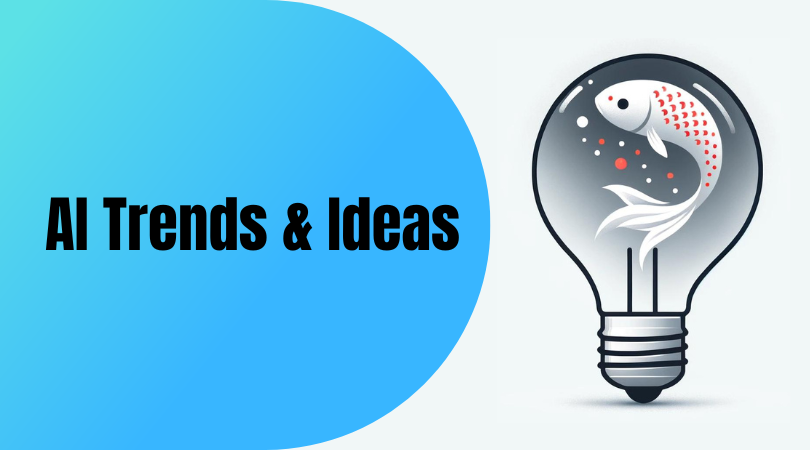- Solan Sync
- Posts
- [What is LLM? How it Works] : How LLM Guides Your Business Ideas to Success
[What is LLM? How it Works] : How LLM Guides Your Business Ideas to Success
Have you ever been curious about how chatbots, such as ChatGPT, or other Large Language Models (LLMs) function?

When new technologies captivate and excite us, they become an integral part of our lives. We personalize them and attribute human characteristics to them, which sometimes prevents us from fully understanding what we’re actually interacting with.
So, let’s explore some key points, specifically, what defines an LLM and what its limitations are.
What Defines an LLM?
Contrary to common perception, LLMs are neither mere knowledge bases nor straightforward programs. They are, in essence, complex statistical models that represent knowledge in a unique manner. An LLM like ChatGPT4, for instance, is trained on a staggering array of parameters, distilling an extensive trove of data into discernible patterns. These aren’t patterns of explicit knowledge per se, but rather patterns that emulate the structure and dynamics of knowledge. Thus, when prompted with a question, an LLM draws on its statistical underpinnings to generate a response.
How LLMs Process Language
LLMs approach language with a nuanced strategy, breaking down the essence of meaning — be it a concept like “the sofa” — into mathematical representations. Words, phrases, and sentences are encoded as vectors within a multi-dimensional space, transcending the conventional understanding of text.
Upon receiving a query, an LLM converts the question into a sequence of tokens, each representing a textual unit, which could range from a complete word to a fragment of one. These tokens are then processed through the LLM’s intricate framework.
The Magic Behind Vector Embeddings
At the heart of an LLM’s processing capability lies the transformation of text into dense vector embeddings. Each word or token finds its place in a high-dimensional vector space, a realm far more expansive than our familiar three-dimensional world. This space is meticulously designed to capture semantic relationships and contextual subtleties, ensuring that similar concepts are positioned in proximity to one another.
For instance, items like a sofa, loveseat, and chaise, all sharing the common function of seating, are closely aligned in this vector space. Conversely, unrelated terms, such as ‘New York City,’ are positioned far from ‘sofa,’ highlighting the model’s capacity to differentiate and contextualize meanings.
LLMs at Work: Bridging Understanding and Generation
By leveraging these vector embeddings, LLMs excel in a variety of natural language tasks — text completion, language translation, question answering, and chatbot interactions, to name a few. The overarching goal of LLMs is to decode and replicate human language, thereby undertaking tasks centered on natural language processing (NLP) with a remarkable semblance to human cognitive abilities.
Business Ideas from LLM:
1. Customizable Chatbot Solutions for Small and Medium Businesses (SMBs):
Advantages:
Offers a cost-effective customer service solution.
Can be customized to fit the specific needs of various industries.
Reduces workload on human customer service representatives.
Disadvantages:
Initial setup and customization can be time-consuming.
Requires ongoing maintenance and updates.
3-Month Action Plan for MVP:
Develop a basic chatbot using LLM technology.
Offer a pilot program to local SMBs for feedback.
Iterate on the product based on user input.
Points to Explore:
Determine the most demanded features from SMBs.
Analyze competitors and their offerings.
Explore potential pricing models.
2. LLM-based Content Generation Service:
Advantages:
Streamlines content creation for blogs, social media, and websites.
Offers scalable solutions for businesses of all sizes.
Can generate diverse content types to meet various needs.
Disadvantages:
Quality control can be challenging.
May require human oversight for nuanced content.
3-Month Action Plan for MVP:
Create a platform that allows users to input content requirements.
Generate sample content pieces for marketing purposes.
Acquire early users and collect extensive feedback.
Points to Explore:
Identify target markets and their content needs.
Develop a robust editing and feedback loop for quality assurance.
Consider integration with existing content management systems.
3. AI-driven Customer Support Optimization Platform:
Advantages:
Enhances efficiency by automating responses to common inquiries.
Improves customer satisfaction through 24/7 support availability.
Gathers valuable customer insights through interaction analysis.
Disadvantages:
May struggle with complex or unique customer issues.
Integration with existing customer support systems can be complex.
3-Month Action Plan for MVP:
Design a platform that integrates with popular customer support software.
Implement AI to handle FAQs and route complex issues to humans.
Launch a beta version with select companies for real-world testing.
Points to Explore:
Evaluate the technological requirements for integration with various support systems.
Understand the balance between AI automation and the need for human intervention.
Analyze customer feedback for continuous improvement.
Thank you for reading this article so far, you can also get the free prompts from here.
What Will You Get?
Access to my Premium Prompts Library.
Access our News Letters to get help along your journey.
Access to our Upcoming Premium Tools for free.
Check out discounted digital contents on https://www.solan-ai.com/
⭐️ ChatGPT materials
📚 What I’m Reading
💡 Bonus
🪄 Notion AI — Boost your productivity with an AI Copilot
Notion AI is a new feature of Notion that helps you write and create content using artificial intelligence. Notion offers a number of AI features.
Here are some of the best features:
Write with AI: This category includes a feature called “Continue writing”. This feature is useful if you don’t know exactly how to continue writing.
Generate from page: In this category, you will find, for example, functions for summarizing or translating texts.
Edit or review page: The features of this category help you to improve your writing. Examples: Fix spelling and grammar, change tone, or simplify your language.
Insert AI blocks: You can also insert AI blocks. AI blocks are predefined instructions that you can execute later. These blocks are useful for Notion templates.
Reply